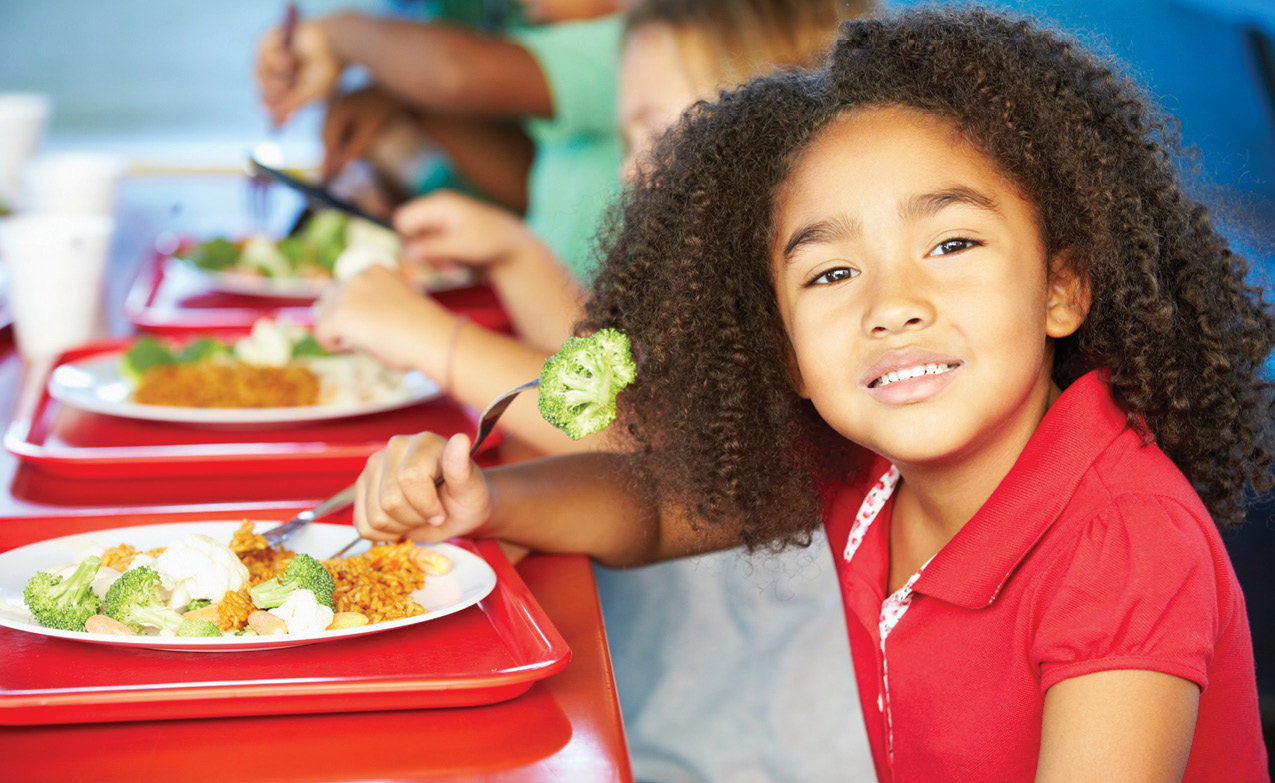Unpaid school lunches
What’s the problem and what can we do about it?
By Julia Moore

After hearing about an alumnus of Morehouse College paying off the student loan debt for an entire graduating class, local mom Jen Motyka was inspired. “I thought, well, I can’t really afford to do that,” she says with a laugh, “but maybe I can do something on a smaller scale in my own community.” So Jen visited a local school to ask about paying down the amount of debt parents owe for unpaid school lunches.
“Originally, I just thought it was going to take $20, or $100,” says Jen, but that was far from the reality. Jen was informed that to cover 13 student fees, it would be about $1,100, and the entire school had over $7,000 of student lunch debt. “I just couldn’t believe it!” she exclaims.
You may think “Well, the schools should just give kids free lunches since they receive federal funds,” but not all schools are eligible for free or reduced lunches. Schools that receive full federal reimbursement for meals have a Community Eligibility Provision (CEP), explains Beth Seitz, program coordinator for the National School Lunch Program in Alaska. In order to be a CEP school or district, 40 percent of students must be living below the poverty line. While 70 percent of Alaska school districts qualify for CEP, Alaska’s major districts (Anchorage, Mat-Su, Fairbanks, Kenai and Juneau) don’t qualify, which means children are eligible only on a case-by-case basis.
“For the past two years, the State of Alaska has had a steady rate of 52 percent of families qualifying for free or reduced cost lunches,” says Beth. But with certain budget cuts to Medicaid and federal changes decreasing the amount that the poverty line expands year-to-year, this may reduce the number of families eligible. “It’ll knock a lot of families off of benefits,” she adds. “Granted, in our program, once a child shows up on a list, they’re good for a year. That means that next year, if they aren’t on a list, the school districts would have a lot higher percentage of ‘paid’ or ‘reduced’ kids as opposed to ‘free’ kids.”
If kids can’t pay for their meals, at a certain point the school has to do something. Some districts will give families a limited amount of reimbursable meals – meals that parents will have to pay back – but after that, the child receives an alternate lunch, like a peanut butter and jelly sandwich and milk, instead of the standard five-component meal.
To Jen, this idea is a real motivator behind paying back this debt. “I know it’s so cliché, but the children are our future. Who’s going to take care of us when we’re old? Who’s going to lead us?” she asks passionately. “If they’re not being fueled to think or have the energy to be creative, then they’re not reaching the potential that we, as a community, should provide the opportunity to reach.”
On a community level, Juneau has an account dedicated to receiving donations to their district’s unpaid lunch debt. “At the end of the school year, any families that have unpaid debts, can clear them with those donated funds,” explains Beth. “I believe they had some criteria, but for the most part, it really does help.”
With crowd-sourcing through Facebook, and creating a Gofundme account for the school’s unpaid meal debt alone, Jen and her generous friends were able to raise more than $900 to go toward her school’s debt. To donate like this, you can work with the school’s coordinator to ensure that the funds are distributed fairly, but the money also can go toward a certain number of randomly selected students or even to an entire grade level.
Jen and her kids also have an annual lemonade sale, where they donate 10 percent of the proceeds – last year giving $200 worth of much-needed supplies to Children’s Lunchbox. This year, they’re considering continuing their donations to the local school.
RESOURCES
• Find info on eligibility for free or reduced lunches at: fns.usda.gov/cnp/fr-032019
• To receive the latest news and updates from Alaska Child Nutrition Programs, subscribe to the listserv by filling out the form at: list.state.ak.us/mailman/listinfo/ak_child_nutrition_programs










